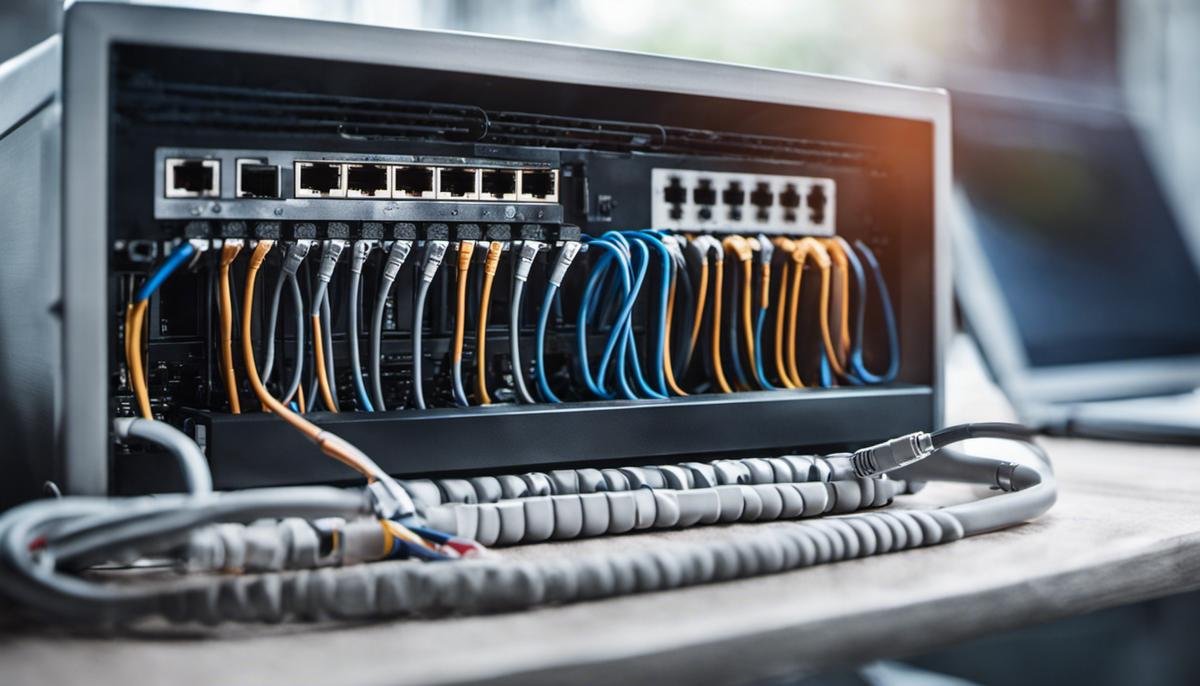In today’s digital age where networking forms the crux of various operations, understanding and resolving minute discrepancies, such as the persistent ‘Enter Network Credentials’ message on Windows, plays a significant role. This message can appear due to a multitude of reasons, stemming from broken connections to unupdated network adapter drivers. It’s important to understand that this is more than an annoyance – it can hinder your computer flow, obstruct data sharing, and disrupt productivity. In this discussion, we delve into the fundamentals of Windows networking, shedding light on the causes and implications of network credential errors. We also provide insightful resolutions to these issues and preventative steps for future avoidance.
Understanding Network Credentials Error
Understanding Network Credentials Error
A network credentials error generally occurs when a Windows system attempts to access a resource on another Windows system, and it can’t verify the credentials provided. Network credentials are the account and password related information that the system uses to verify a user and provide access to the network resources such as shared folders, printers, and other accessible network computers.
Why Windows May Persistently Ask for Network Credentials
Windows will persistently ask for network credentials when there is a discrepancy or issue in the verification of these. It could be due to incorrect username or password, or mismatches between stored credentials and the current ones, which can often happen after password changes.
Another common issue is the mismatching between the system time of the two machines. If one system is set ahead even by a few minutes, compared to the other, it might cause persistent network credentials errors.
In some cases, it could be a system bug or problem with the Windows Credential Manager tool, which stores and manages the user credentials needed to log into websites or connect to other networks.
How “Enter Network Credentials” Error Affects Your Computer’s Operations
The persistent “Enter Network Credentials” message can significantly hamper your computer operations, particularly if you are in a network that heavily relies on shared resources. Every time Windows cannot verify network credentials, it restricts you from gaining access to those network resources.
This could mean an inability to share or receive files from other computers on the network, difficulty using shared printers, or restrict access to the internet and intranet resources. In short, work or tasks that require frequent interaction with network resources can become slow or interrupted due to this error.
If this message continues to pop up, it signifies a problem in your system’s network settings that needs immediate attention. Ignoring this could lead to further errors and complications, including potential security breaches if the wrong credentials are used knowingly or unknowingly. Therefore, it’s important to address and fix these errors promptly.

Windows Networking Basics
Understanding Windows Networking Basics
Windows networking refers to the ways in which your Windows computer connects to the internet and communicates with other devices. This involves a series of settings and profiles that can be adjusted to resolve network issues, such as persistent “Enter Network Credentials” messages.
To navigate around your Windows network settings, you need to:
- Click on the Windows start button at the bottom left corner of your computer screen.
- Click on the settings symbol (shaped like a gear).
- In the settings menu, there’s a set of categories— click on the “Network & Internet” option.
Within this menu, you can manage all of your network settings. Some important sections include Wi-Fi (for wireless internet connections), Ethernet (for wired internet connections), Dial-up (for telephone network connections), and VPN (for virtual private network connections).
Managing Network Profiles
Network profiles involve your saved networks and their respective settings. To view or manage your network profiles, follow these steps:
- Navigate to the “Network & Internet” settings menu.
- If you’re connected to a network, it should appear under the Wi-Fi or Ethernet section. Click on the network name to view further details.
- In this new menu, you’ll see your network profile. Here, you can view saved networks, change your network profile (making the network public or private), or forget a network.
Fixing “Enter Network Credentials” Message
The “Enter Network Credentials” message generally appears when trying to access shared resources on a network. The credentials it’s asking for are your Windows login credentials— your username and password. If this message continually pops up, it can indicate an issue with your network settings or sharing options.
Here are the steps to address this issue:
- Open the control panel by typing “Control Panel” in the Windows search and clicking on the app result.
- Within the Control Panel, find and click on “Network and Sharing Center”.
- In the left-hand side, click on “Change advanced sharing settings”.
- Here, you’ll see an option that states “Turn off password protected sharing” under the “All Networks” section. Select this to disable the continual prompt for network credentials.
- Click Save changes.
If this change does not resolve your issue, it could indicate a problem with your Windows login credentials or network profile, necessitating further troubleshooting steps.

Troubleshoot Network Credentials Issues
Understanding Network Credentials Issues in Windows
Typically, the “Enter Network Credentials” message appears on Windows systems when they cannot verify your username and password on the network. This issue often occurs when sharing a printer or file with another computer within the same network. Some common reasons for this issue can be outdated network adapter drivers, incorrect firewall settings, incorrect network security settings, and more.
Using In-Built Windows Troubleshooting Tools
Windows provides a whole suite of in-built troubleshooting tools that can help you resolve any network issues, including issues with network credentials.
-
Press the Windows key and type “Troubleshoot” in the search box. Click on “Troubleshoot settings” from the given options.
-
In the Troubleshoot setting window, scroll down to “Network Adapter” and click on it.
-
Click on “Run the troubleshooter”. Windows will detect any problem that’s causing the “Enter Network Credentials” issue and attempt to fix it.
Updating Network Adapter Drivers
Updating your network adapter drivers can resolve any compatibility or functionality issues preventing your credentials from being recognized.
-
Press the Windows key and type “Device Manager” in the search box, then select it.
-
Expand the Network adapters option, right-click on your network adapter, and select “Update driver”.
-
On the next screen, select “Search automatically for updated driver software”. Windows will search the internet for the latest driver for your network adapter and install it.
Modifying Network Security Settings
Sometimes, changing your network security settings can fix the persistent “Enter Network Credentials” message.
-
Press the Windows key and type “Control Panel” in the search box, then select it.
-
Click on “Network and Sharing Center”.
-
Choose the network you’re connected to and click on “Properties”.
-
Select “Sharing” and ensure that the “Network discovery” and “File and printer sharing” options are turned on.
-
Back in the Network and Sharing Center screen, click on “Advanced sharing settings”.
-
Expand the “All Networks” profile and ensure that the “Turn off password protected sharing” option is selected.
These measures should correct the issue and stop the persistent “Enter Network Credentials” message. If the problem persists even after following the above-mentioned steps, it may be worth seeking additional technical help, as the problem could be deeper than a simple credentials issue.

Preventive Maintenance
Applying Windows Updates Regularly
One of the practical ways to avoid persistent ‘enter network credentials’ messages is to consistently update your Windows system. These updates are not just about adding new features, they’re also about fixing any glitches and boosting system security. To start, access the ‘Windows Update’ in the ‘Settings’ menu. Ensure ‘Automatic Updates’ are enabled so that Windows downloads and installs updates as they become available.
Managing Your Firewall Settings
Firewalls are essential for protecting your system, but sometimes they may interfere with network connectivity and necessitate frequent credential inputs. Thus, managing your firewall settings can help prevent these interruptions. Use the ‘Windows Defender Firewall’ option in the ‘Control Panel’ to regulate the firewall settings. Manage the permissions for private and public networks or temporarily disable the firewall when it’s safe to do so.
Establishing a HomeGroup
Setting up a HomeGroup can help in avoiding persistent ‘Enter Network Credentials’ messages. A HomeGroup is a group of computers on a home network that can share files and printers. Once set up, all devices in the group will remember each other’s credentials. However, note that HomeGroup feature is only available in Windows 7, Windows 8, and Windows 8.1.
Activating Credential Manager Service
Windows Credential Manager is a service that saves network credentials. Checking its status and ensuring it is running can help in preventing recurrent credential prompts. This can be done through ‘Services’, which can be accessed by typing ‘Services.msc’ in the ‘Run’ box.
Opting for a Network Reset
Resetting your network can be a last resort to fix this persisting issue. This option resets your network settings to default and reinstalls network devices. It may require a system restart and you’ll need to reconnect resources, but it is likely to resolve the constant credential prompts.
Password-Protect Sharing Turn Off
Disabling password-protected sharing is another solution to the persistent ‘Enter Network Credentials’ notifications. You’ll find this option in the ‘Network and Sharing Center’ under ‘Advanced sharing settings’. Keep in mind, disabling this will mean that anyone in your network can access shared resources without needing a password.
Regular practice of these tips will minimize the repetitiveness of ‘Enter Network Credentials’ messages and network interruption. Remember that the digital environment is dynamic and every solution might not work for everyone. Hence, keep exploring and inspecting to find the best suit for your network.

Photo by yazbeckistan on Unsplash
As we navigate the modern realm of digital networking, understanding how to diagnose and mend persistent issues like the recurring ‘Enter Network Credentials’ message on Windows becomes crucial. By gaining knowledge about Windows network fundamentals, troubleshooting techniques, and proactive preventative maintenance, we can assure smoother computer operations and enhanced productivity. Hence, the next time Windows sends out a network credentials prompt, you can address the matter promptly and adeptly. It’s about time we turned these technological challenges into opportunities for growth and learning in the digital landscape.